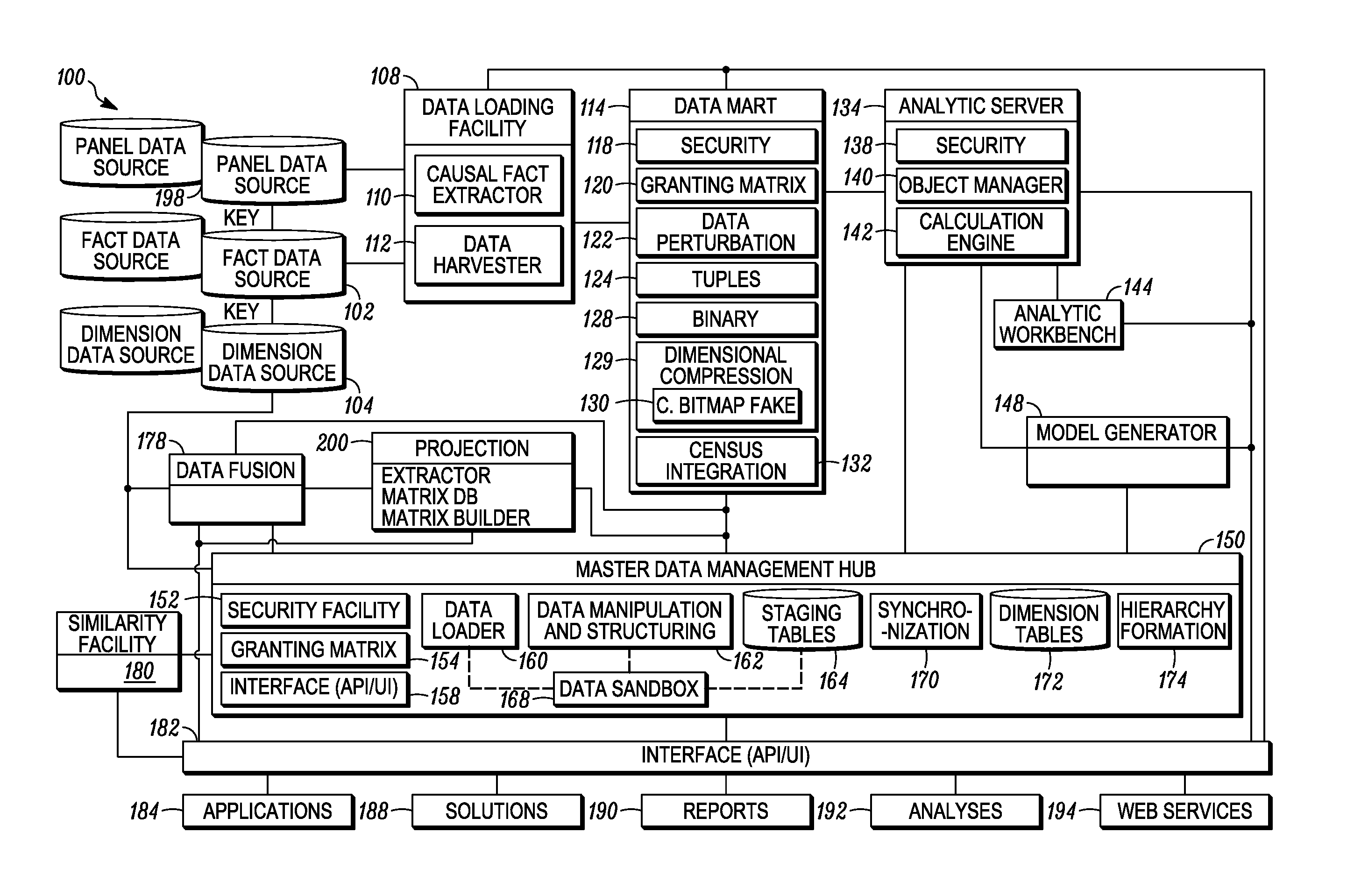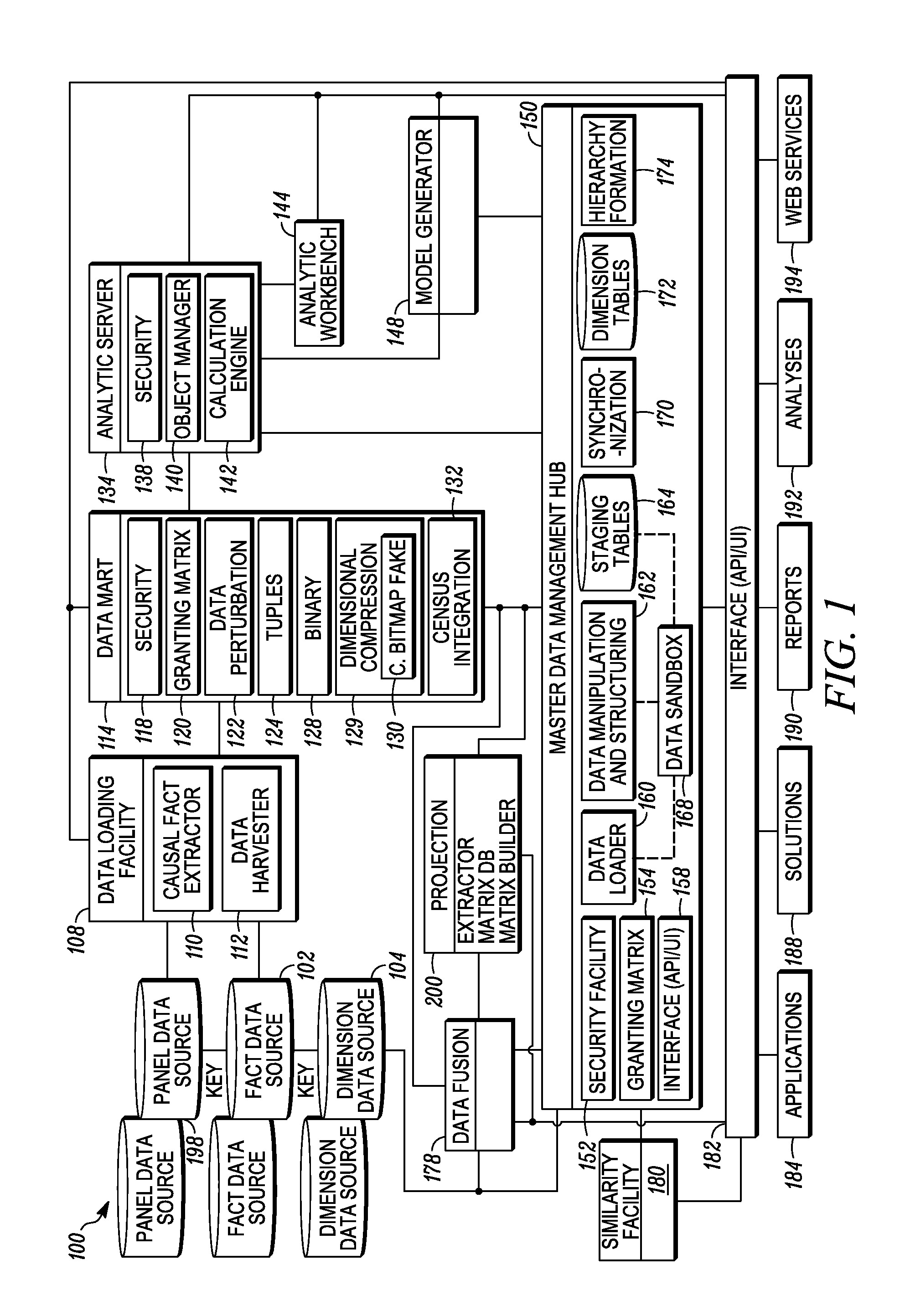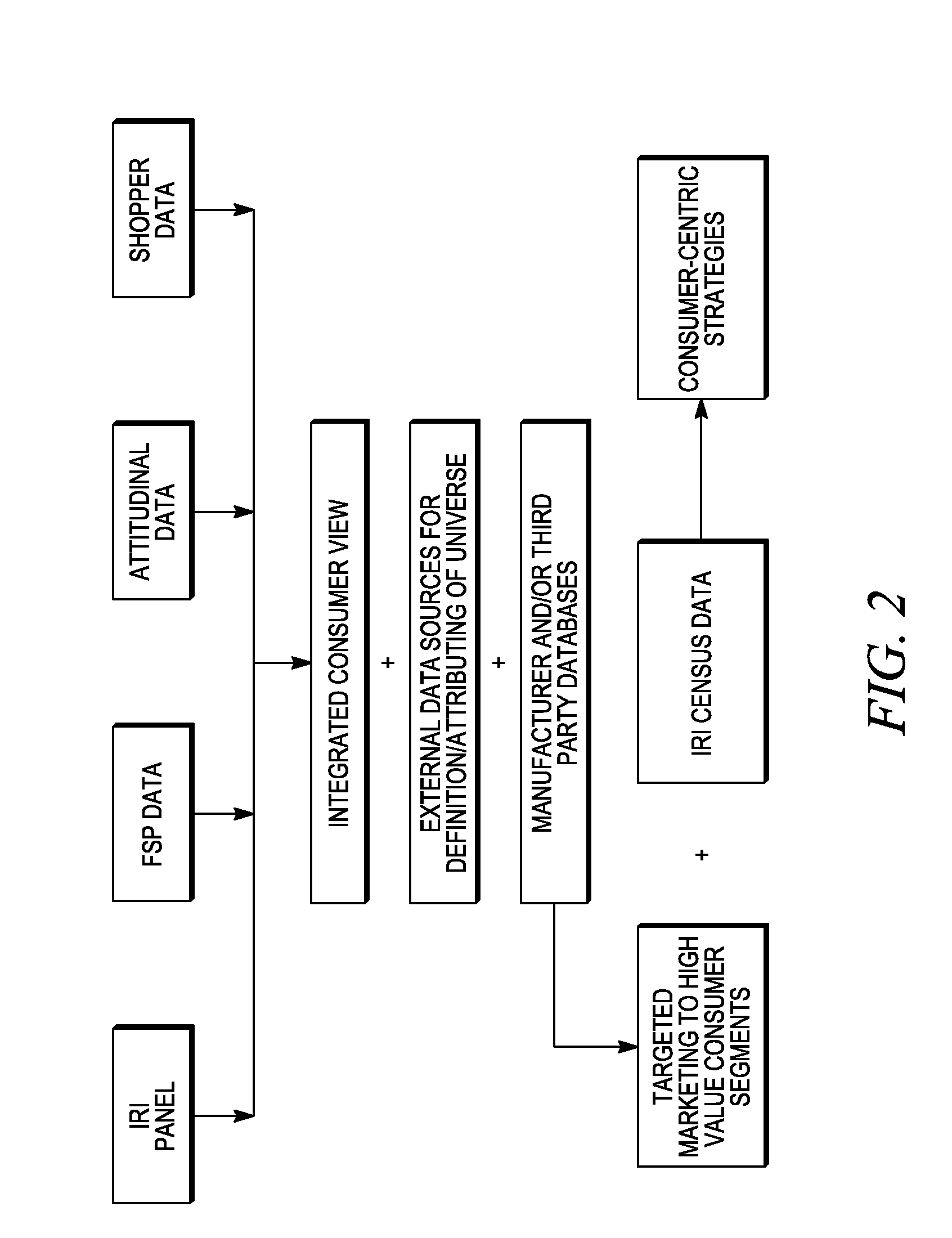Data visualization application
a data visualization and application technology, applied in the field of data analysis methods and systems, can solve the problems of inability to provide on-demand flexible access, inability to use any single data type, and significant bottlenecks in information systems,
- Summary
- Abstract
- Description
- Claims
- Application Information
AI Technical Summary
Benefits of technology
Problems solved by technology
Method used
Image
Examples
example 1
[0993]If a household has just one member with condition that treats with Rx only then the attribute may be set as follows.
[0994]‘HHs suffering from ______’=‘Yes’,
[0995]‘______ suffers treating with Rx only’=‘Yes’
[0996]‘______ suffers treating with OTC only’=‘No’
[0997]‘______ suffers treating with Rx and OTC=‘No’
example 2
[0998]If a household has two members with the condition one treats with Rx only and one member treats with OTC only.
[0999]‘HHs suffering from ______’=‘Yes’,
[1000]‘______ suffers treating with Rx only’=‘Yes’
[1001]‘______ suffers treating with OTC only’=‘Yes’
[1002]‘______ suffers treating with Rx and OTC=‘No’
example 3
[1003]If a household has one member with condition that marked on the survey ‘Rx and OTC’ for the health condition.
[1004]‘HHs suffering from ______’=‘Yes’,
[1005]‘______ suffers treating with Rx only’=‘No’
[1006]‘______ suffers treating with OTC only’=‘No’
[1007]‘______ suffers treating with Rx and OTC=‘Yes’
[1008]Other Attributes:
[1009]Attribute: ‘I try to eat whole grains’: Attribute value (‘Yes’, ‘No’) If any one in household marked ‘agree’ on survey this may be set to ‘Yes’.
[1010]Attribute: ‘Concern about trans fatty acids’: Attribute value (‘Yes’, ‘No’) If any one in household marked ‘very’ or ‘somewhat’ on survey this may be set to ‘Yes’ for the household.
[1011]Attribute: ‘Concern with refined or processed foods’: Attribute value (‘Yes’, ‘No’) If any one in household marked ‘very’ or ‘somewhat’ on survey this may be set to ‘Yes’ for the household.
[1012]Wellness Segment Data attributes include:
[1013]Attribute: Proactive Managers: Attribute value (‘Yes’, ‘No’)
[1014]Attribute: Unconc...
PUM
 Login to View More
Login to View More Abstract
Description
Claims
Application Information
 Login to View More
Login to View More - R&D
- Intellectual Property
- Life Sciences
- Materials
- Tech Scout
- Unparalleled Data Quality
- Higher Quality Content
- 60% Fewer Hallucinations
Browse by: Latest US Patents, China's latest patents, Technical Efficacy Thesaurus, Application Domain, Technology Topic, Popular Technical Reports.
© 2025 PatSnap. All rights reserved.Legal|Privacy policy|Modern Slavery Act Transparency Statement|Sitemap|About US| Contact US: help@patsnap.com



